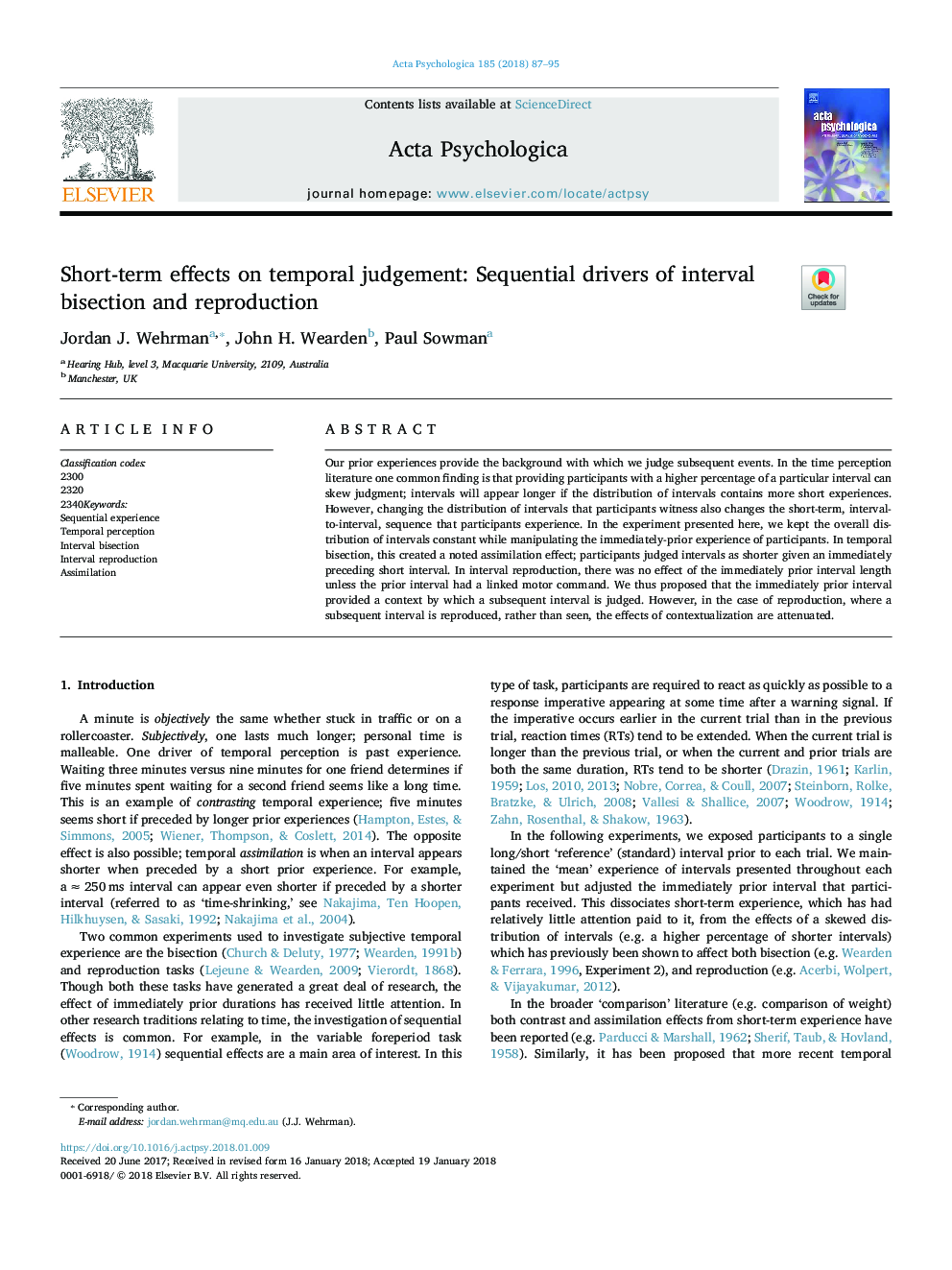| Article ID | Journal | Published Year | Pages | File Type |
|---|---|---|---|---|
| 7276734 | Acta Psychologica | 2018 | 9 Pages |
Abstract
Our prior experiences provide the background with which we judge subsequent events. In the time perception literature one common finding is that providing participants with a higher percentage of a particular interval can skew judgment; intervals will appear longer if the distribution of intervals contains more short experiences. However, changing the distribution of intervals that participants witness also changes the short-term, interval-to-interval, sequence that participants experience. In the experiment presented here, we kept the overall distribution of intervals constant while manipulating the immediately-prior experience of participants. In temporal bisection, this created a noted assimilation effect; participants judged intervals as shorter given an immediately preceding short interval. In interval reproduction, there was no effect of the immediately prior interval length unless the prior interval had a linked motor command. We thus proposed that the immediately prior interval provided a context by which a subsequent interval is judged. However, in the case of reproduction, where a subsequent interval is reproduced, rather than seen, the effects of contextualization are attenuated.
Related Topics
Life Sciences
Neuroscience
Cognitive Neuroscience
Authors
Jordan J. Wehrman, John H. Wearden, Paul Sowman,
